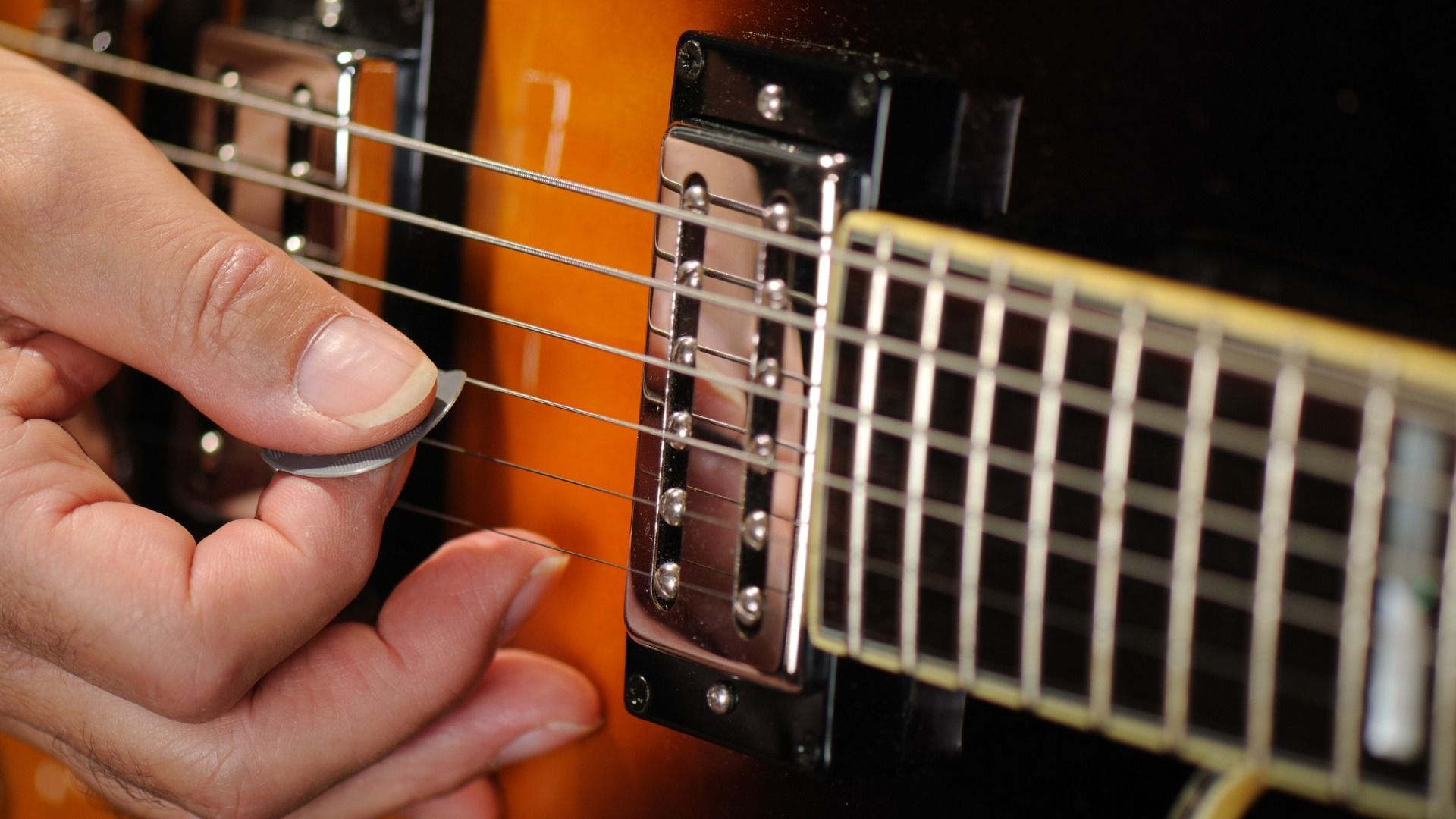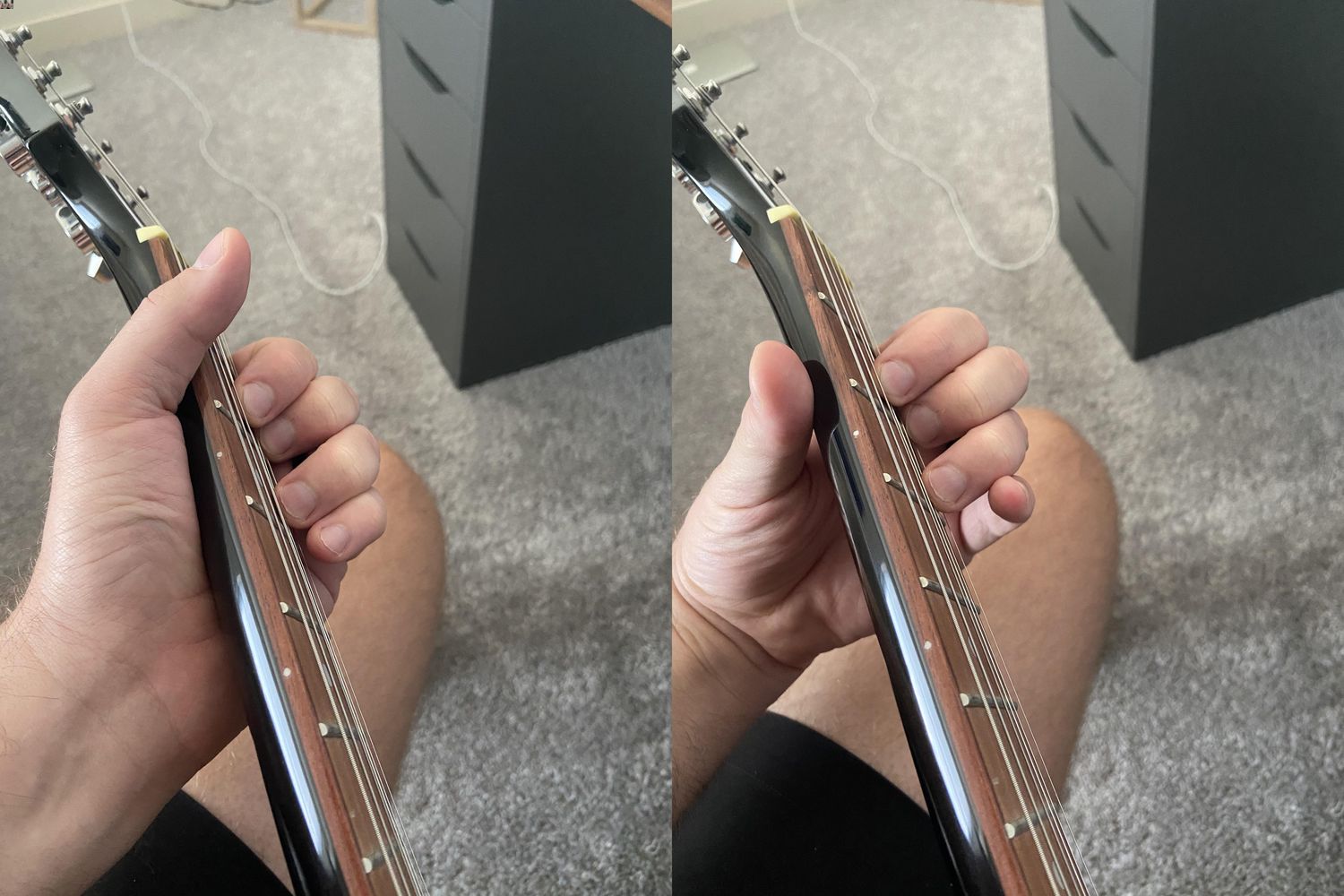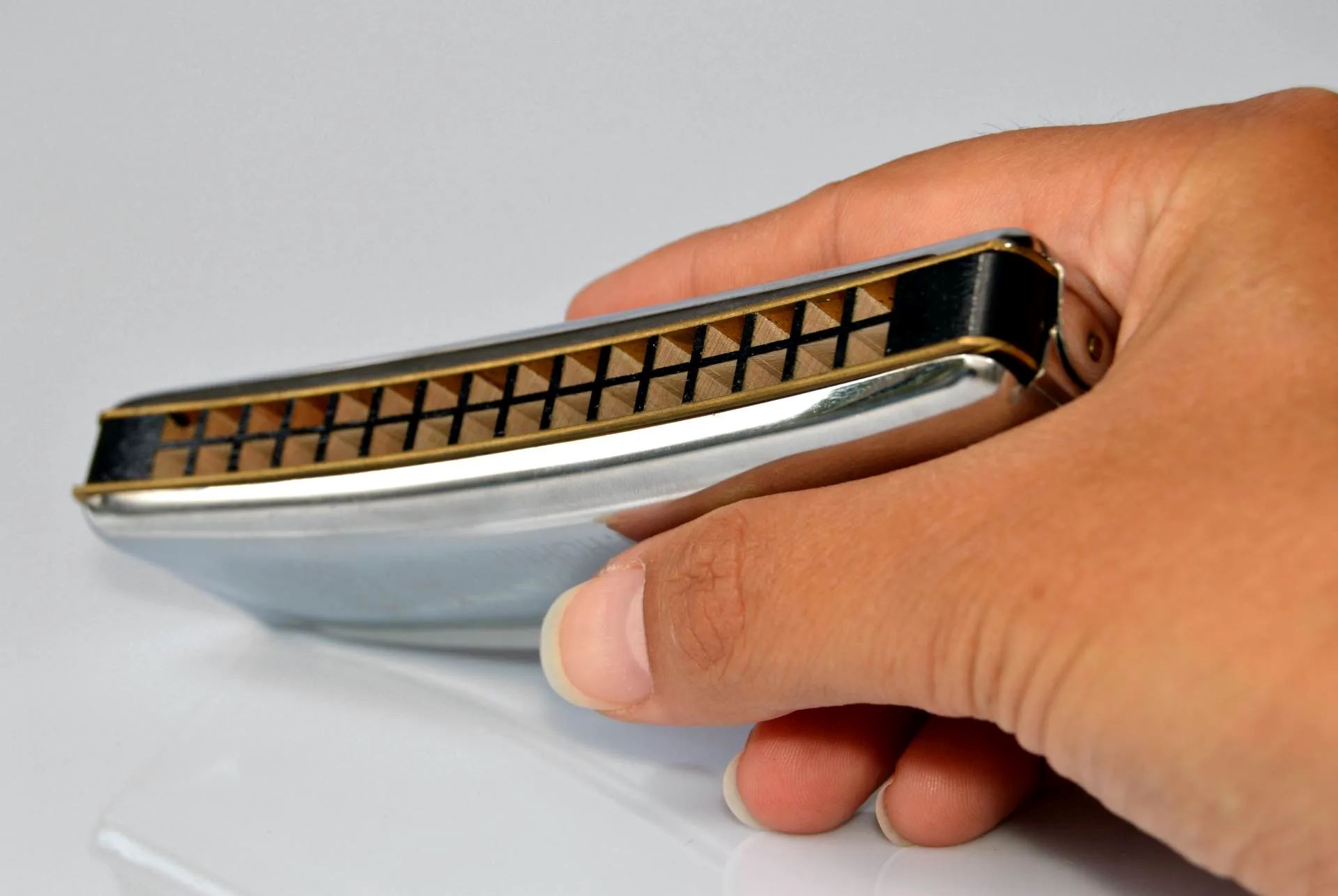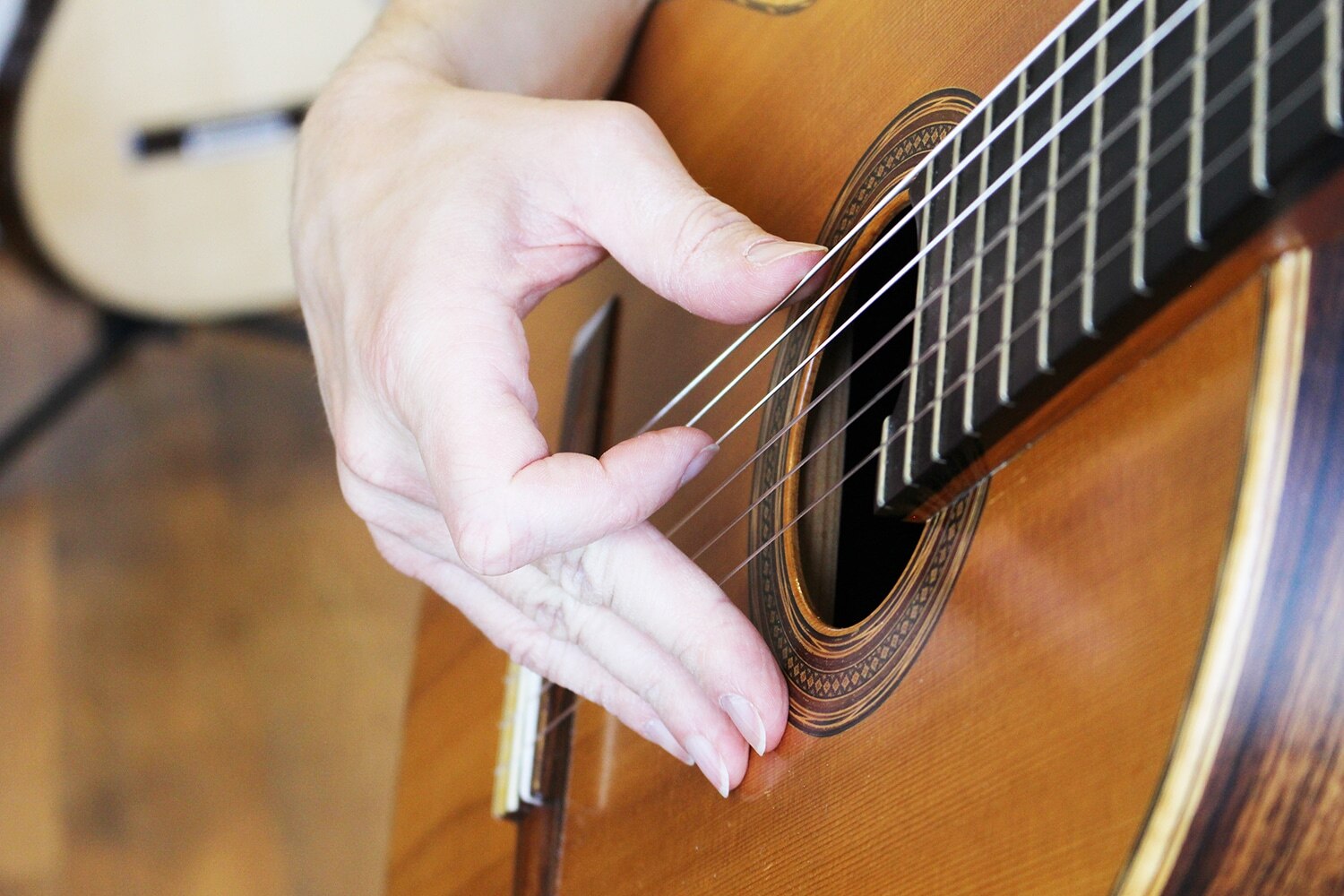Home>Instruments>Bass>How To Hold Bass Pick


Bass
How To Hold Bass Pick
Published: November 28, 2023
Learn how to hold a bass pick properly to improve your bass playing technique. Discover tips and tricks for a better grip and control.
(Many of the links in this article redirect to a specific reviewed product. Your purchase of these products through affiliate links helps to generate commission for AudioLover.com, at no extra cost. Learn more)
Table of Contents
Introduction
When it comes to playing the bass guitar, one often overlooked yet essential aspect is how to hold the bass pick. The way you hold the pick can significantly impact your playing technique, your tone, and your overall comfort while playing. Whether you’re a beginner just starting out or an experienced bassist looking to refine your technique, understanding the proper way to hold the bass pick is crucial for your musical journey.
Holding the bass pick correctly allows you to have better control over your playing dynamics, speed, and accuracy. It directly affects how the strings are struck and how the sound is produced. Therefore, developing a good grip is essential to achieving the desired tone and avoiding unnecessary strain or fatigue in your hand.
In this article, we will explore different techniques for holding the bass pick, focusing on proper hand placement, finding a comfortable grip, maintaining a relaxed grip, and avoiding common mistakes. Additionally, we will provide some tips for practice and improvement to help you develop your own unique style and enhance your playing skills. So, let’s dive in and discover the secrets of holding the bass pick!
Importance of Holding the Bass Pick Correctly
Holding the bass pick correctly may seem like a small detail, but it plays a crucial role in your overall playing experience and the sound you produce. Here are some reasons why it’s important to pay attention to your pick grip:
- Technique: The way you hold the pick impacts your playing technique. A proper grip allows for better control and accuracy when striking the strings. It enables you to execute different techniques, such as alternate picking, tremolo picking, or hybrid picking, with ease and efficiency.
- Tone: The pick’s position and angle against the strings affects the tone you produce. Holding the pick too loosely or incorrectly can result in a weak or muffled sound, while a firm and precise grip can produce a clearer and more defined tone. Experimenting with different pick angles and pressures can help you find the sweet spot for achieving your desired tone.
- Comfort: Holding the pick correctly promotes comfort and prevents strain or fatigue in your hand. A relaxed grip reduces tension in your muscles and allows for longer playing sessions without discomfort or the risk of injury.
- Speed and Accuracy: A proper grip on the bass pick enables faster and more precise playing. With a solid hold, your hand will have better control over the pick’s movement, resulting in cleaner and more accurate picking patterns and faster speed when needed.
- Expression and Artistry: Holding the bass pick correctly gives you greater control over articulation and dynamics. It allows you to vary the attack and intensity of your playing, enhancing your ability to express yourself musically and add depth to your bass lines.
Overall, holding the bass pick correctly is a fundamental aspect of playing the bass guitar. It affects your technique, tone, comfort, speed, accuracy, and musical expression. Taking the time to develop a proper grip will significantly improve your playing experience and help you unlock your full potential as a bassist.
Different Techniques for Holding the Bass Pick
There are various techniques for holding the bass pick, and the right one for you depends on your playing style and personal preference. Here are some commonly used techniques:
- The Standard Grip: This is the most common technique. Hold the pick between your thumb and index finger. The tip of the pick should extend slightly past your fingers, allowing for a controlled strike on the strings.
- The Sideways Grip: Some bassists prefer to hold the pick at a slight angle, with the wider end resting against the side of the index finger. This grip can offer a different attack and tone, and it’s commonly used for sweeping or raking techniques.
- The Fingertip Grip: Instead of gripping the pick with the entire fingers, this technique involves using just the fingertips to hold and control the pick. It can provide more flexibility and precision, especially for intricate playing styles.
- The Thumb and Middle Finger Grip: Instead of using the index finger, this technique involves holding the pick between the thumb and middle finger. This grip can provide a unique angle of attack and allow for quick switching between fingerstyle and pick playing.
- The Hybrid Grip: As the name suggests, this technique combines elements of using a pick and fingerstyle playing. The pick is usually held between the thumb and index finger, while the remaining fingers are used to pluck or slap the strings for added versatility.
It’s important to note that there is no one-size-fits-all approach when it comes to holding the bass pick. Experimenting with different techniques allows you to find what feels most comfortable and natural for you. Don’t be afraid to try different grips and make adjustments based on your playing style and the sound you want to achieve.
Remember, the goal is to find a grip that offers control, comfort, and the ability to execute your desired playing techniques with ease. With time and practice, you’ll develop your own unique style and find the technique that best suits you as a bassist.
Proper Hand Placement
Proper hand placement is crucial for holding the bass pick correctly and maximizing your playing technique. Here are some key points to consider:
- Thumb Placement: Place the thumb behind the pick, opposite the side that strikes the strings. The thumb provides stability and support for the pick, allowing you to maintain control and precision.
- Index Finger: Place the index finger on top of the pick, applying just enough pressure to hold it securely. Avoid gripping the pick too tightly, as it may restrict your flexibility and cause tension in your hand.
- Relaxed Wrist and Arm: Keep your wrist and arm relaxed while playing. Strive for a natural and comfortable position that allows for fluid motion. Avoid excessive tension or bending of the wrist, as it can lead to discomfort and limit your playing ability.
- Positioning on the Strings: Position the pick at a slight angle against the strings. Experiment with different angles to find the one that produces the desired tone and allows for smooth string contact.
- Hand Positioning: Position your hand slightly above the strings, hovering over them. This will give you the freedom to strike the strings cleanly and control the dynamics of your playing. Avoid resting your hand on the strings or the bridge, as it can dampen the sound and restrict your movement.
- Finger Placement: Keep your remaining fingers relaxed and slightly curled, hovering above the strings without touching them. This allows for greater control and flexibility in your playing, especially if you need to incorporate fingerstyle techniques.
Proper hand placement is essential for maintaining a stable and comfortable grip on the bass pick. It facilitates precise control over your playing and reduces the risk of strain or injury. As you practice, pay attention to your hand position and make adjustments as needed to achieve optimal technique and playing comfort.
Finding Your Comfortable Grip
When it comes to holding the bass pick, finding a grip that feels comfortable and natural for you is crucial. Here are some tips to help you discover your ideal grip:
- Experimentation: Start by experimenting with different pick sizes and materials. Various picks have different shapes, thicknesses, and textures, which can influence how they feel in your hand. Try out a variety of options to see what works best for you.
- Thumb and Finger Position: Pay attention to the positioning of your thumb and fingers. Adjust the angle and placement to find a grip that allows for optimal control and comfort. Some players find that placing the pick slightly to the side of the thumb offers better stability and control.
- Pressure: Find the right amount of pressure to apply with your fingers. Avoid gripping the pick too tightly, as this can lead to tension and restrict your playing. Experiment with different levels of pressure until you find a balance that allows for a firm grip without strain.
- Flexibility: Keep in mind that your grip may need to adapt depending on the musical genre, playing style, or specific techniques you are using. Allow yourself to be flexible and willing to make adjustments as needed to accommodate different playing situations.
- Comfort: The most important factor in finding your comfortable grip is ensuring that it feels natural and does not cause any pain or discomfort. Your hand should be relaxed, and your grip should allow for smooth and effortless movement across the strings.
- Take Breaks: As you explore different grip options, give yourself breaks to rest and reset your hand muscles. This will prevent fatigue and allow you to assess how comfortable and sustainable your grip is over extended periods of play.
Remember, there is no one-size-fits-all grip when it comes to holding the bass pick. It is a personal preference that will develop over time. Trust your instincts and listen to the feedback your hand and fingers provide. With practice and experimentation, you will find a grip that feels natural and allows you to unleash your full potential as a bassist.
Maintaining a Relaxed Grip
Maintaining a relaxed grip on the bass pick is vital for both technical proficiency and avoiding unnecessary tension and fatigue in your hand. Here are some tips to help you maintain a relaxed grip:
- Avoid Excessive Tension: Be mindful of any unnecessary tension in your hand and fingers while holding the pick. Strive for a grip that allows for a relaxed and natural position, rather than squeezing or gripping too tightly.
- Check Your Muscles: Regularly check your hand and forearm muscles for tension or stiffness. If you notice any tightness, take a moment to consciously relax those muscles and release any built-up tension.
- Use Efficient Movements: Determine the optimal amount of movement required to strike the strings with the pick. Avoid overextending your hand or making exaggerated movements. Focus on economy of motion and only use the necessary amount of effort.
- Regularly Stretch and Warm Up: Before playing, take some time to stretch your hand and arm muscles. This helps improve flexibility and prevents strain. Additionally, warming up with simple picking exercises can prepare your hand for playing and promote a more relaxed grip.
- Monitor Your Grip During Play: Pay attention to your grip as you play, especially during intense or fast passages. Make a conscious effort to keep your hand and fingers loose and relaxed, even when the music becomes demanding.
- Take Breaks: Give yourself regular breaks during practice sessions to allow your hand to rest and recover. Overplaying without breaks can lead to tension and fatigue, impacting your technique and overall playing experience.
- Listen to Your Body: Pay attention to any discomfort or pain in your hand or fingers. If you experience any discomfort, adjust your grip, take a break, or seek guidance from a qualified instructor to ensure you are holding the pick in a way that reduces strain.
Maintaining a relaxed grip not only enhances your playing technique but also contributes to your long-term hand health. By incorporating these tips into your practice routine, you will develop a more relaxed and efficient grip, allowing for improved control, speed, and endurance while minimizing the risk of hand injuries or discomfort.
Avoiding Common Mistakes
When it comes to holding the bass pick, there are some common mistakes that beginners and even experienced bassists may make. Being aware of these mistakes can help you avoid them and improve your overall grip and technique. Here are some common mistakes to watch out for:
- Gripping Too Tightly: Holding the pick too tightly can restrict your hand’s movement and result in unnecessary tension. Remember to grip the pick firmly enough to maintain control but avoid excessive force or pressure.
- Positioning the Pick Incorrectly: Placing the pick too close to the tip of your fingers or too far back can affect your control and strike accuracy. Aim for a position where the pick extends slightly past your fingers, allowing for clean and precise strikes on the strings.
- Using Inconsistent Grip Pressure: Maintaining a consistent grip pressure is important for maintaining control and producing a consistent tone. Pay attention to your grip pressure and avoid unintentionally varying it during your playing.
- Ignoring Your Hand’s Comfort: It’s crucial to prioritize your hand’s comfort and ergonomics. If your hand feels strained or fatigued while holding the pick, make adjustments to your grip to alleviate any discomfort. Taking breaks and listening to your body’s cues is essential for preventing injuries.
- Not Adapting to Different Playing Styles: Different playing styles and musical genres may require adjustments to your grip and technique. It’s important to be adaptable and experiment with different grips to accommodate various playing situations and achieve the desired sound.
- Neglecting Hand and Finger Flexibility Exercises: Flexibility and dexterity exercises can help you develop a more fluid and controlled grip. Neglecting these exercises may limit your hand’s range of motion and impede your overall playing ability.
- Using a “Death Grip”: Avoid gripping the pick too tightly or forcefully, as it can result in excess tension and strain. A relaxed grip with just enough pressure is sufficient for maintaining control and producing a balanced tone.
By being mindful of these common mistakes and making conscious efforts to avoid them, you can improve your pick holding technique and enhance your overall playing experience. Regular self-assessment and adjustments are key to continually refining your grip and achieving optimal performance on the bass.
Tips for Practice and Improvement
To further enhance your grip on the bass pick and continuously improve your playing technique, consider implementing the following tips into your practice routine:
- Consistent Practice: Regular practice is key to developing and maintaining a solid grip on the bass pick. Dedicate time each day to work on your technique and focus on refining your grip.
- Slow and Steady: Start by practicing at a slower tempo to ensure accuracy and proper hand placement. Once you are comfortable, gradually increase the speed while maintaining control and precision.
- Focus on Accuracy: Rather than prioritizing speed, focus on playing accurately and cleanly. Pay attention to your hand and finger movements, ensuring that each strike on the strings is deliberate and controlled.
- Record and Evaluate: Record yourself playing and listen back to assess your technique and sound. Look for any areas where your grip may need improvement, and make necessary adjustments based on your observations.
- Seek Feedback: Have a teacher or experienced bassist evaluate your grip and technique. They can provide valuable feedback and suggest corrections or adjustments that can help you refine your grip and enhance your playing.
- Try Different Pick Materials: Experiment with different pick materials, such as plastic, nylon, or felt, to find the one that feels most comfortable and produces the desired tone. The material can affect how the pick feels in your hand as well as the attack and responsiveness of your playing.
- Practice Hand Strengthening Exercises: Incorporate exercises that promote hand and finger strength, such as finger stretches, grip trainers, or squeezing stress balls. Strengthening your hand muscles can improve your grip stability and control.
- Watch and Learn: Study and observe professional bassists to gain insights into their pick holding techniques. Pay attention to their hand placement, grip, and overall playing style. Experiment with incorporating elements of their approach into your own playing.
- Experiment with Different Picks: Try out picks of varying thicknesses, shapes, and sizes to find the one that suits your playability and comfort preferences. Different picks can produce different tones and provide varied grip sensations.
- Be Patient and Persistent: Developing a solid grip on the bass pick takes time and practice. Be patient with yourself and continue working on your technique consistently. With perseverance, your grip will become more refined and natural over time.
Remember, practice is key when it comes to improving your grip on the bass pick. By incorporating these tips into your daily practice routine and remaining dedicated to honing your technique, you will gradually strengthen your grip and unlock new levels of playing prowess on the bass.
Conclusion
Holding the bass pick correctly is a fundamental aspect of playing the bass guitar. By paying attention to your grip, hand placement, and technique, you can enhance your playing experience and achieve optimal control, tone, and comfort.
In this article, we explored the importance of holding the bass pick correctly. We discussed different techniques for holding the pick, such as the standard grip, sideways grip, fingertip grip, thumb and middle finger grip, and hybrid grip. We also delved into the significance of proper hand placement for maintaining control and avoiding strain.
Additionally, we highlighted the importance of finding a comfortable grip that suits your playing style and preferences. Experimentation, flexibility, and adapting to different playing styles are key elements in discovering a grip that feels natural and allows you to express yourself musically.
We also discussed the significance of maintaining a relaxed grip to enhance your technique and prevent unnecessary tension or fatigue in your hand. By avoiding common mistakes, such as gripping too tightly or positioning the pick incorrectly, you can play with greater precision and minimize discomfort.
To further improve your grip, we provided tips for practice and improvement, including consistent practice, focusing on accuracy, seeking feedback, and exploring different pick materials. By implementing these tips and remaining patient and persistent, you can continually refine your grip and take your bass playing to new heights.
In conclusion, holding the bass pick correctly is an essential skill for any bassist. By understanding the importance of grip, practicing proper hand placement, and regularly evaluating and adjusting your technique, you can develop a strong and comfortable grip that enhances your playing experience and allows you to express your musicality with confidence and precision.











